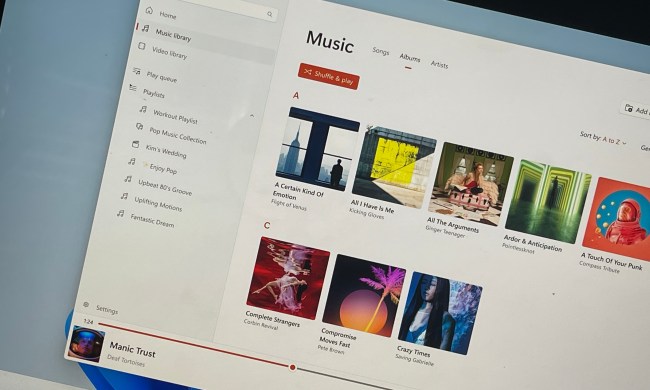 Microsoft
MicrosoftYour everyday Windows apps are going to get a whole lot smarter. As Microsoft mentions in its Windows Insiders Blog, using the Windows 11 Paint and Notepad app will improve thanks to new AI features that the tech giant is adding to make it more helpful for users. It’s still in early testing, and there is no official information about when or if it’ll roll out to all users.
For starters, the Notepad app for Windows 11, after getting an update that added autocorrect and spellcheck, is now getting a new Rewrite ability that helps you rewrite highlighted text following any instructions you add.
You can customize how the AI responds in three ways: asking for something longer, using a different tone, or choosing a different format. You’ll also have a Replace button you can click on to apply the generated text. Additionally, Microsoft says you can use the feature by selecting the text, right-clicking on it, and choosing Rewrite. You can also use the Ctrl + I keyboard combination.
Microsoft also mentions: “The previous versions are still preserved in the current dialog, so you can easily revert to earlier versions if needed. If you prefer, you can disable the rewrite feature in app settings.”
The feature is only available for testers in the U.S., Canada, U.K., Germany, France, and Italy. A Microsoft account is needed to use the features, and for now, there is no official information on whether any other countries will be added to the list. Microsoft also claims that the Notepad app will be 35% faster, and some Windows 11 users might even see a 55% performance boost.
 Microsoft
MicrosoftSwitching tracks, the Paint app for Windows 11 is also getting a feature called generative fill that you can use to add an AI-generated element to an image. Microsoft uses the example of someone selecting the area to add an image with text in the prompt below. The castle is created and added to the image by simply clicking the Create button. If you don’t like the result, you can ask the AI to try again.
You can also use another helpful AI feature called generative erase, which lets you erase any undesirable elements in the background. You brush over the area of the object you want to erase, and the feature will do the rest. But there is a catch to the generative fill feature: It’s only going to be available on Copilot+ PCs with a Snapdragon CPU initially. This is bad news for Windows 11 users with a “normal” PC since the feature requires the PC to have a powerful NPU, which is a prerequisite.
Paint already had its first AI feature, Cocreator, launched earlier this year, which aligned with the deprecation of Paint 3D.
Of course, Microsoft is being cautious about the new features, especially in light of the whole saga around Recall. It said it will “monitor feedback and see how it lands” before it rolls them out to other users.

Judy Sanhz is a Digital Trends computing writer covering all computing news. Loves all operating systems and devices.
Gemini AI is making robots in the office far more useful

Lost in an unfamiliar office building, big box store, or warehouse? Just ask the nearest robot for directions.
A team of Google researchers combined the powers of natural language processing and computer vision to develop a novel means of robotic navigation as part of a new study published Wednesday.
Read more
It only took 41 years, but Notepad just got its most important update ever

After 41 years of being part of Windows, Notepad has finally been updated by Microsoft with two essential features: autocorrect and spellcheck. Given how prevalent spellcheck is across any app where you can enter text, you could be forgiven for thinking that Notepad already had the feature, but it was just added to the app available in Windows 11.
Microsoft originally announced the addition in March, and it began rolling out spellcheck in Notepad to Windows Insiders the following month. Over the past few days, the wider Windows 11 install base has received the update. You probably never noticed it -- I checked out Notepad on my PC and saw spellcheck was enabled, and I haven't seen a peep from Windows Update.
Read more
I gave the Windows Media Player another shot. Here’s what surprised me

Microsoft has had a strange relationship with local video playback for the past several years. It's one of those features that was caught in the purgatory that was created with the start of Windows 10, as Microsoft hung onto legacy apps like Windows Media Player while trying to push into a new, modern era. We've come a long way since that point, and Windows 11 is the closest to offering a full-featured video player that Microsoft has been in years.
Media Player, the app built into Windows 11 for video and audio playback, has come a long way in the two years since it was introduced. It's surprisingly feature-rich for such a simple application. Even with updates and new additions to Media Player, though, it still falls short of free, open-source options because of two key issues.
The history
Read more




















 English (US) ·
English (US) ·